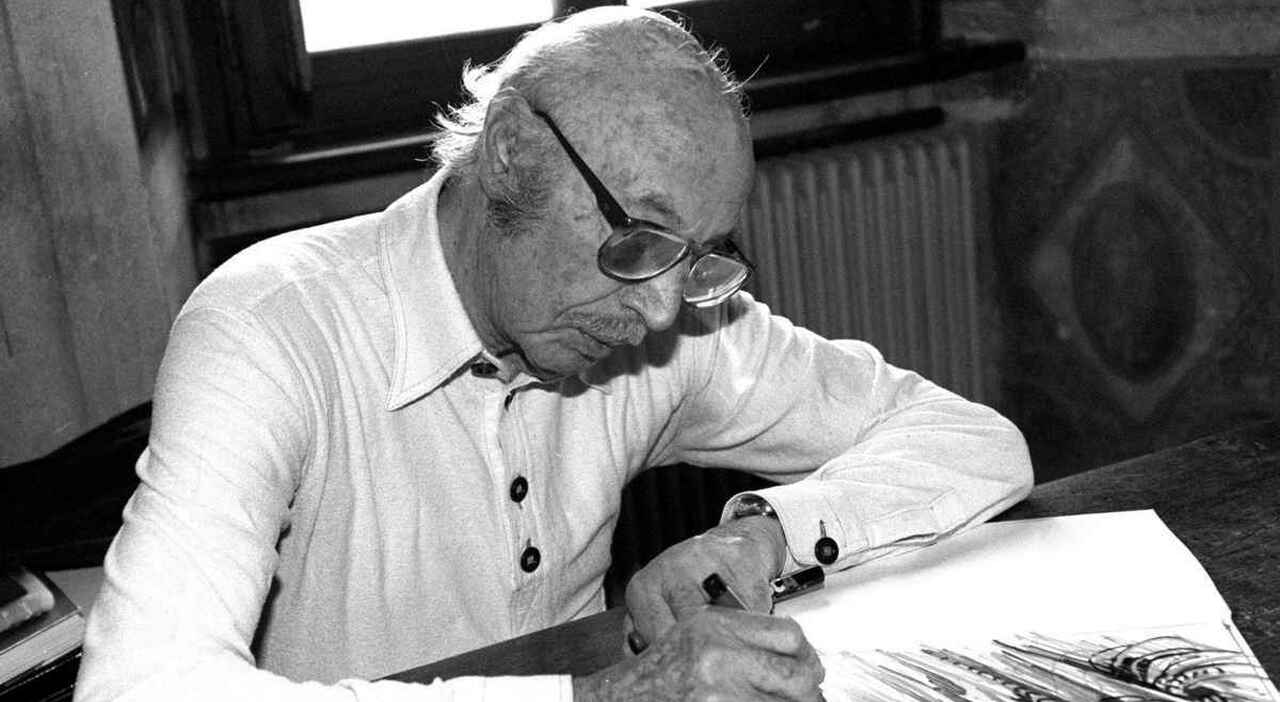Thursday 7 March 2024, 19:11 - Last updated: 19:18
Sculptor, painter, and Italian partisan, Umberto Mastroianni was one of the most famous Italian artists of the 20th century. Son of Vincenzo Mastroianni and his second wife Luigia Maria Vincenza Conte and uncle of actor Marcello Mastroianni, he is considered one of the greatest geniuses of sculpture of the twentieth century. Born in Fontana Liri (Frosinone) on September 21, 1910, Umberto Mastroianni was one of the most important painters and sculptors of the 20th century Italian scene. Son of Vincenzo Mastroianni and Luigia Maria Vincenza Conte, from a young age he showed great artistic talent and a passion for sculpture, to the point of moving to Rome in 1924 to study sculpture at his uncle Domenico's studio. During this period he also attended the drawing courses of the Accademia di San Marcello, before moving in 1926 with his family to Turin, where he perfected his artistic skills at the atelier of the sculptor Michele Guerrisi. Here he refined his style, inspired by the futurism of Umberto Boccioni and obtaining his first official recognition, the Tourism Award, offered by the Ministry of Public Education. From 1930 his career took off, beginning to exhibit his works in national and European shows. His first solo exhibition took place in 1931 at the "Galleria Genova" in Genoa, which was followed by numerous exhibitions at national union shows, the Quadriennali di Roma, the Promotrici di Torino, and the Biennali di Venezia. During the Second World War, he joined the Italian Resistance, fighting in the partisan formations of the Canavese. This fact would influence his subsequent works, which would express the issues born from the struggle for freedom and would develop in him a poetics of resistance, recognized also by the art critic Giulio Carlo Argan. His works would become a symbol of the moral meaning of the Resistance, also contributing to consolidating his reputation as a committed sculptor. In the 1940s, he began to experiment with a new art using poor materials, using terracotta, cardboard, sacks, and plaster, becoming the first Italian abstract sculptor. After the war, he evolved towards plastic dynamism, still inspired by Boccioni's art, and with references to futurism, cubism, and the works of artists such as Constantin Brancusi, Jean Arp, and Henry Moore. Once again, his inspiration was directed towards the search for man and human value, emerging from tragedy and war. One of his most significant works of this period is the "Monument to the Fallen of Cuneo", considered his most beautiful work and awarded in 1973 by the Accademia dei Lincei. In the following years, he continued to exhibit his works in important shows, receiving numerous recognitions, including the Imperial Prize in Japan. His artistic research also developed in engraving, with exhibitions of etchings and lithographic portfolios. He also collaborated with famous architects, such as Carlo Mollino and Ettore Sottsass, creating works that combine sculpture and architecture, in addition to working as a sculpture teacher at the Academy of Fine Arts of Bologna, the Academy of Fine Arts of Naples, and the Academy of Fine Arts of Rome. Umberto Mastroianni died at the age of 88 on February 25, 1998, in his house-museum in Marino, near the Giardini Colonna. His remains are in the cemetery of Carmagnola, near Turin. Today the Umberto Mastroianni Foundation and the Museum of the Foundation preserve and enhance his works, giving the public the opportunity to admire and study his contribution to the art of the twentieth century.
© ALL RIGHTS RESERVED
This article is automatically translated
